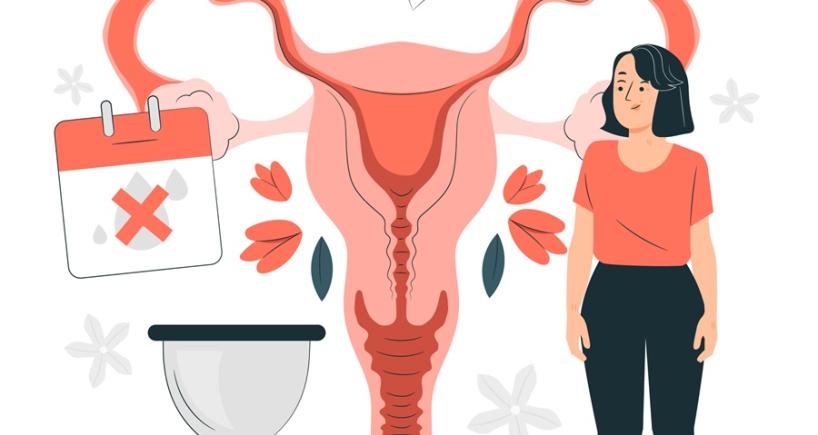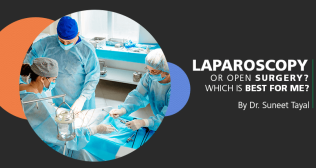
What is Ovarian Cyst: Symptoms, Causes, and Treatment
Introduction
Ovarian cysts can be considered pimples of the female reproductive system. They are mostly benign, annoying, and sometimes painful. Let’s take a deep dive into the symptoms, causes, types, diagnosis, and treatment of ovarian cysts.
Recognizing the Symptoms of an Ovarian Cyst
An ovarian cyst usually manifests symptoms only if it ruptures, is giant, or twists. It then hampers the blood supply to the ovaries. In these cases, women may experience:
- Pain during intercourse
- Recurring need to urinate
- Pelvic pain
- Feeling full after eating a little
- Bloating and swollen tummy
- Facing difficulty emptying bowls
- Menstrual irregularities
- Difficulty in conceiving
Deciphering the Causes of Ovarian Cysts
The most prevalent causes of ovarian cysts include:
- Hormonal Problems: Functional cysts generally disappear on their own without treatment. They may be caused by hormonal issues or by drugs used to help ovulate.
- Endometriosis: Women with endometriosis can develop an ovarian cyst known as endometrioma. The endometriosis-generated tissue might stick to the ovary and form a growth. These cysts can be painful during intercourse and menses.
- Pregnancy: An ovarian cyst usually develops in early pregnancy to help support the pregnancy until the formation of the placenta. Sometimes, the cyst remains on the ovary until later in the pregnancy and might require surgical removal.
- Severe Pelvic Infections: Infections can advance to the ovaries and fallopian tubes and cause cysts to develop.
Diagnosis of Ovarian Cysts
If there are manifestations indicative of an ovarian cyst, a healthcare professional might assess the tummy (abdomen) and perform an internal (vaginal) assessment. They may be able to feel an unusual swelling, which may be a cyst. Other diagnostic modalities include:
Ultrasound Scan:
- A safe and pain-free test that employs sound waves to showcase pictures of internal body structures.
- The scanner probe is rubbed on the abdomen to scan the ovaries.
- A small probe might also be generally placed inside the vagina to examine the ovaries and fetch more comprehensive images.
Blood Test:
- It is often done along with an ultrasound scan. If the outcome of this test is standard, it is less likely the cyst is cancerous.
- A normal CA-125 result and a reassuring ultrasound scan can further eliminate the possibility of cancer.
Some women may undergo other tests, such as a magnetic resonance imaging (MRI) or a computerized tomography (CT) scan. This is not required for the most predominant type of benign ovarian cysts. However, these may be helpful when the ultrasound scan is not conclusive and/or the CA-125 levels are abnormally elevated.
Types of Ovarian Cysts
There are different types of ovarian cysts, each with unique symptoms. Most ovarian cysts are functional, forming due to hormonal variations during the menstrual cycle.
Functional Cysts
They aren‘t associated with any disease. They’re formed during ovulation and often go away without treatment.
Corpus Luteum Cysts
The corpus luteum (temporary organ) is formed after the ovary releases an egg. The corpus luteum is an aggregation of cells that secrete hormones during ovulation. When this organ fills up with fluid, it develops into a cyst.
Follicular Cysts
A follicle in the ovary is responsible for releasing an egg during ovulation. When a female doesn’t release an egg during the month, that follicle may fill up with fluid, causing a cyst development.
Endometriomas
These cysts are formed out of endometrial tissue, the womb’s lining shed during the menstrual cycle. These cysts are prevalent in females suffering from endometriosis.
Dermoid Cysts
They are also called teratomas and comprise several tissue types in the body. These cysts develop on the ovary and comprise tissues like hair, teeth, and skin. They develop from the reproductive cells in the ovary.
Treatment of Ovarian Cysts
In many cases, ovarian cysts go away in a few months without requiring treatment. Whether treatment is required will depend on the size and appearance of the cyst, whether a female has any symptoms, and whether they’ve had menopause. If the affected woman is postmenopausal, they are at a slightly higher chance of developing ovarian cancer. Common treatment modalities include:
Watchful Waiting
A common approach for managing ovarian cysts, especially when they’re small and do not display symptoms, is regular monitoring through ultrasound scans. It permits healthcare professionals to detect any changes in the cyst’s size or appearance. For postmenopausal females, more frequent monitoring may be recommended due to the slightly higher chances of ovarian cancer. If the cyst persists or grows, surgery might be recommended. This approach balances the need for intervention by eliminating unnecessary procedures.
Surgery
Significant or persistent ovarian cysts, or cysts that are causing manifestations, generally need to be surgically excised. Surgery is also usually suggested if there are concerns that the cyst could be cancerous or could turn cancerous. Two types of surgeries are performed to remove ovarian cysts:
- Laparoscopy
- Laparotomy
Weaving Ways: Tips to Shrink Ovarian Cysts Naturally!
Hot Compress
The best way to decrease or shrink cysts is to use heat. If a female has liquid-filled epidermoid cysts, a hot compress may fasten fluid drainage into the lymphatic system. It helps maintain the body’s fluid balance and shields against infection.
Massage
The pain caused by an ovarian cyst can cause the nearby muscles to strain. Massaging the lower thighs, back, and stomach can aid in relieving tension and pain.
Relaxation Technique
Stress and anxiety can worsen the pain. Relaxation techniques, including yoga, meditation, and deep breathing, may help decrease anxiety and reduce the pain intensity. These techniques can aid in managing pain over time and enhance overall health.
If the symptoms of irregular menses or bloating persist for a longer duration, seek medical attention to avoid complications.
Popular Searches :
Hospitals: Cancer Hospital in Delhi | Best Heart Hospital in Delhi | Hospital in Amritsar | Hospital in Ludhiana | Hospitals in Mohali | Hospital in Faridabad | Hospitals in Gurgaon | Best Hospital in Jaipur | Hospitals in Greater Noida | Hospitals in Noida | Best Kidney Hospital in Kolkata | Best Hospital in Kolkata | Hospitals in Rajajinagar Bangalore | Hospitals in Richmond Road Bangalore | Hospitals in Nagarbhavi Bangalore | Hospital in Kalyan West | Hospitals in Mulund | Best Hospital in India | Gastroenterologist in Jaipur
Doctors: Dr. Rana Patir | Dr. Rajesh Benny | Dr. Rahul Bhargava | Dr. Jayant Arora | Dr. Anoop Misra | Dr. Manu Tiwari | Dr. Praveer Agarwal | Dr. Arup Ratan Dutta | Dr. Meenakshi Ahuja | Dr. Anoop Jhurani | Dr. Shivaji Basu | Dr. Subhash Jangid | Dr. Atul Mathur | Dr. Gurinder Bedi | Dr. Monika Wadhawan | Dr. Debasis Datta | Dr. Shrinivas Narayan | Dr. Praveen Gupta | Dr. Nitin Jha | Dr. Raghu Nagaraj | Dr. Ashok Seth | Dr. Sandeep Vaishya | Dr. Atul Mishra | Dr. Z S Meharwal | Dr. Ajay Bhalla | Dr. Atul Kumar Mittal | Dr. Arvind Kumar Khurana | Dr. Narayan Hulse | Dr. Samir Parikh | Dr. Amit Javed | Dr. Narayan Banerjee | Dr. Bimlesh Dhar Pandey | Dr. Arghya Chattopadhyay | Dr. G.R. Vijay Kumar | Dr Ashok Gupta | Dr. Gourdas Choudhuri | Dr. Sushrut Singh | Dr. N.C. Krishnamani | Dr. Atampreet Singh | Dr. Vivek Jawali | Dr. Sanjeev Gulati | Dr. Amite Pankaj Aggarwal | Dr. Ajay Kaul | Dr. Sunita Varma | Dr. Manoj Kumar Goel | Dr. R Muralidharan | Dr. Sushmita Roychowdhury | Dr. T.S. MAHANT | Dr. UDIPTA RAY | Dr. Aparna Jaswal | Dr. Ravul Jindal | Dr. Savyasachi Saxena | Dr. Ajay Kumar Kriplani | Dr. Nitesh Rohatgi | Dr. Anupam Jindal |
Specialities: Heart Lung Transplant | Orthopedic | Cardiology Interventional | Gastroenterologist in Jaipur | Best Cardiology Hospital in India | Obstetrics & Gynaecology | Onco Radiation | Neurosurgery |



















